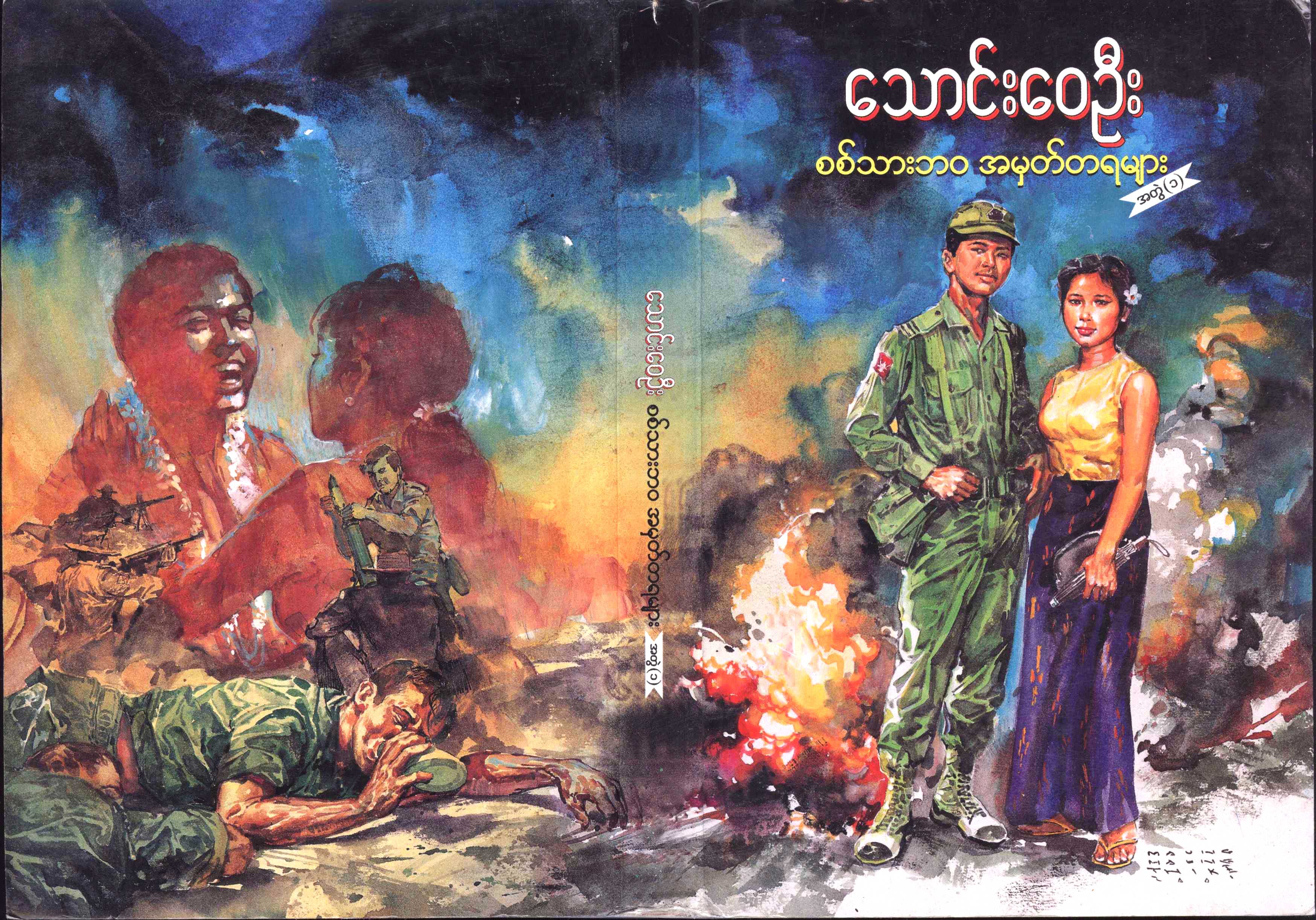Thaung Wai Oo (сА▒сАЮсАмсАДсА╣сА╕сА▒сАЭсАесАосА╕) is a former colonel who in recent years has published prolifically on the Myanmar armed forces, or Tatmadaw, as well as on military history and strategy. He writes in a plain, conversational style for a general audience, with lots of dialogue and careful attention to the onomatopoeia of weaponry.
In the first part of Memoirs of a soldier’s life (сАЕсАЕсА╣сАЮсАмсА╕сАШсАЭ сАбсАЩсА╜сАРсА╣сАРсАЫсАЩсА║сАмсА╕сБК сАТсАпсАРсАнсАЪсАбсВАсААсАнсАЩсА╣сБК сАЬсА╜сА║сА│сАнсВХсАЭсА╜сААсА╣сАЖсАФсА╣сА╕сБ╛сААсАЪсА╣сАЩсАВсБвсАЗсАДсА╣сА╕сАРсАнсАпсААсА╣сБК сАбсАРсА╝сА▓ сББсБК сБВсБАсБАсБДсБК сАЕсАм сБГсБЙсБЕ) Thaung Wai Oo recalls his unplanned entry into the army, officer training, girl interests and marriage. He dwells on time spent in Infantry Battalion 19 skirmishing with the Karen National Union’s first brigade and having a ghost on his side in the Papun Hills during the late 1960s and early 70s. After he is transferred to IB 61 the story shifts to Mon State and a new adversary, the KNU’s dashing and daring Lt. Hla Soe. At Ye things are complicated by a multitude of real and perceived enemies, a full-scale battle and a lost pistol, but are made easier by the ready supply of Thai whisky.
After a stint back in Karen State during 1976 Thaung Wai Oo applies to go north to where the real action is located, fighting the Burma Communist Party, but for over a year after the transfer he is situated in an area occupied by Shan and Kachin armed groups. In March 1978 he finally joins a major anti-communist operation, on the defensive at Tangyan, near the banks of the Thanlwin (Salween). For the first time he finds himself on the receiving end of heavy artillery. The shells fall like hailstones. The machine guns rattle incessantly. It is a far cry from the guerrilla warfare of elusive, lightly-armed nemeses in the jungles down south. Against thousands of well-armed attackers, his surviving men fall back, wounded and in disarray. After two days of savage fighting the Tatmadaw regains a strategic hill with support from the air force. The battle lasts for around two weeks.
Thaung Wai Oo describes the Tangyan combat in more detail in the third of his “memorable battles” series. The two preceding books deal with other major battles against the BCP, at Mong Yawng in 1980 and 88, and Hsi-Hsiwan in 1986. The latter was witnessed from the other side by Bertil Lintner, who described it in his Land of Jade. Military strategy buffs will be pleased to know that in addition to having photographs of the type found in Lintner’s text the ex-army officer also includes maps of battle sites with unit placements and movements in his.
Other works by Thaung Wai Oo recall counter-narcotics operations and the activities of commando units. There is a biography of the author’s father, who was a captain in the British imperial forces; studies of Japanese campaigns in World War Two, and a rather unusual work on soldiers’ fortunes as found in the palms of their hands.
Interested readers can browse romanized titles by Thaung Wai Oo on the NLA catalogue, and for the benefit of New Mandala visitors, a version of the same in Burmese is available here.
[This post is provided by the National Library of Australia as part of our Book Zone feature. For further information on the featured publications contact Nick Cheesman at ncheesman@nla.gov.au] Facebook
Facebook  Twitter
Twitter  Soundcloud
Soundcloud  Youtube
Youtube  Rss
Rss 